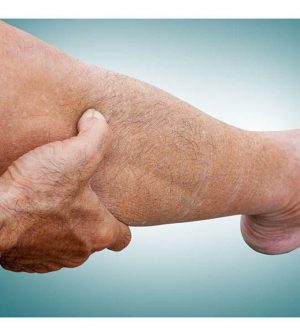- Skip Storing This Everyday Product in the Fridge Door
- Green Tea + B3 Pairing May Boost Brain Health
- Navigating Your Midlife Crisis: Embracing New Possibilities
- City Raccoons Showing Signs of Domestication
- Mapping the Exposome: Science Broadens Focus to Environmental Disease Triggers
- One Week Less on Social Media Linked to Better Mental Health
- Your Brain Changes in Stages as You Age, Study Finds
- Some Suicide Victims Show No Typical Warning Signs, Study Finds
- ByHeart Formula Faces Lawsuits After Babies Sickened With Botulism
- Switch to Vegan Diet Could Cut Your Greenhouse Gas Emissions in Half
Peripheral Artery Disease: Common, and Here’s How to Spot It

If you’re older and your legs ache, it could be nothing — or it could be a sign of peripheral artery disease (PAD).
Have you ever even heard of it? Maybe not. That’s why the Society for Vascular Surgery would like you to know a little more.
“As we age, we are susceptible to some aches and pains, possibly a tightness in the lower back after standing for long periods of time or a soreness in the legs after a challenging workout, but if unexplained pain persists, it’s important to see a physician,” said Dr. Alan Dietzek, a surgeon in Danbury, Conn. “Of course, not all pain indicates a serious problem, but certain leg pain and other symptoms in the lower extremities could be a sign of PAD.”
Peripheral artery disease happens when plaque builds up in the arteries of the legs. This happens gradually. If it’s allowed to progress, it can limit or block blood flow in that artery.
The disease affects about 10 million people in the United States. Risks for developing it include smoking, high blood pressure, high cholesterol, diabetes, kidney failure and obesity.
Older, at-risk patients can have an ultrasound and leg blood pressure examination, to help determine if they have PAD and how severe it is.
Symptoms can include leg pain when walking or climbing, numbness, cramps, weakness and foot wounds that do not heal. It may start with difficulty walking, but can progress to infections, painful foot ulcers, gangrene and amputation.
If you develop PAD, your doctor may recommend quitting smoking, losing weight and exercising, such as walking 30 minutes a day. Patients who have diabetes and PAD should control their blood sugar. Some patients will be prescribed medication to improve blood flow.
Sometimes surgery will be recommended to restore blood flow to the legs or feet. Patients who don’t have treatment or who don’t follow their doctor’s advice have a higher chance of PAD progressing to ischemia — blood flow to the limb so restricted that they may lose that limb.
“It’s critical to get diagnosed and treated as early as possible,” Dietzek said in a society news release. “While PAD can be severe and limb-threatening, the good news is that it is a slow-moving disease, and many patients can keep the worst effects at bay simply by changing their lifestyle.”
More information
The U.S. Centers for Disease Control and Prevention has more on peripheral artery disease.
SOURCE: Society for Vascular Surgery, news release, Sept. 15, 2021
Source: HealthDay
Copyright © 2025 HealthDay. All rights reserved.










